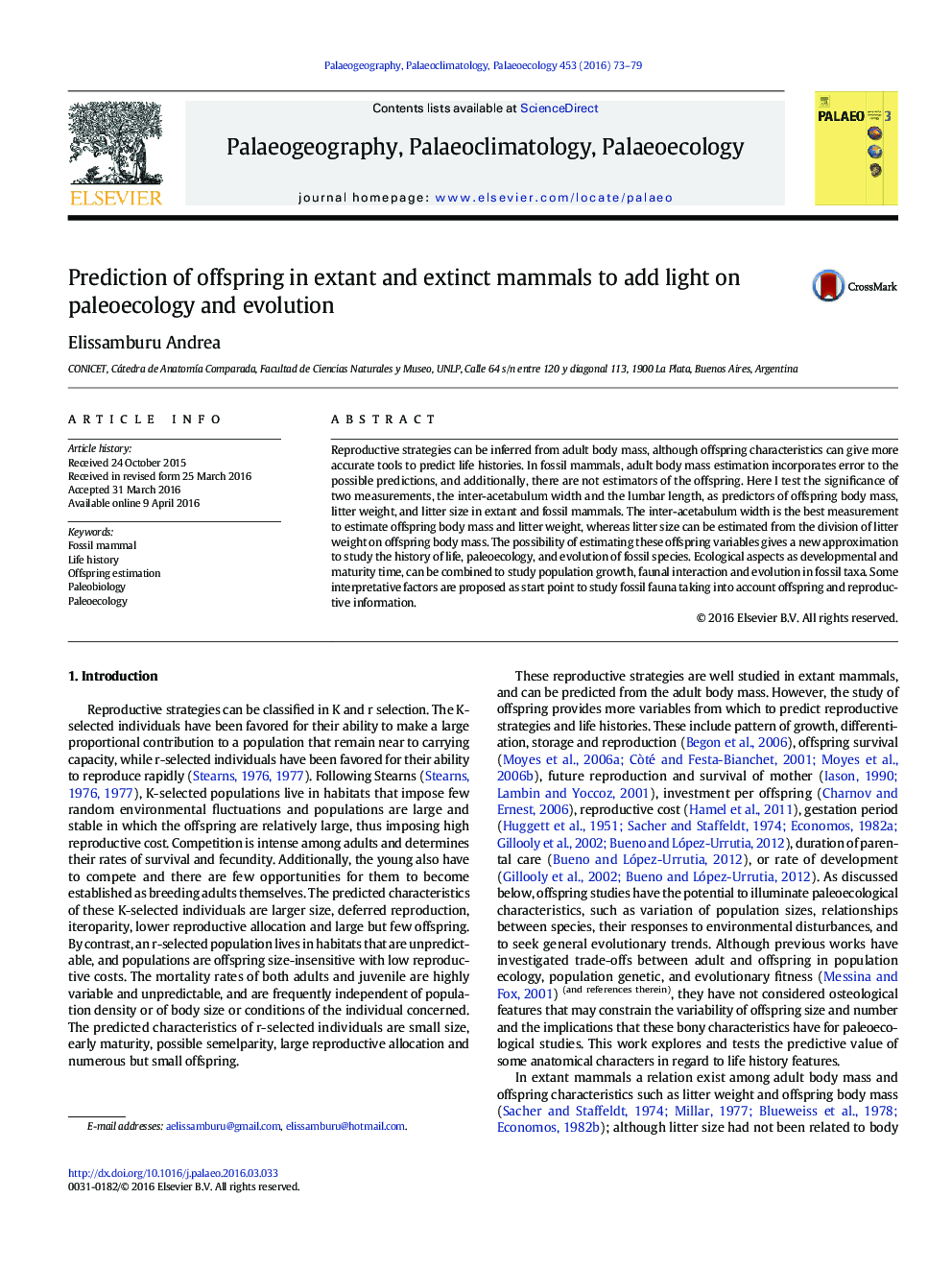| کد مقاله | کد نشریه | سال انتشار | مقاله انگلیسی | نسخه تمام متن |
|---|---|---|---|---|
| 4465700 | 1622138 | 2016 | 7 صفحه PDF | دانلود رایگان |
• Adult anatomy of placental mammals is used to estimate mammal offspring traits.
• Offspring body mass, litter weight and litter size are estimated in fossil mammals.
• Estimation of fossil life history permits to improve paleobiology and evolution.
• New approximations to study paleobiology, paleoecology, and evolution are possible.
Reproductive strategies can be inferred from adult body mass, although offspring characteristics can give more accurate tools to predict life histories. In fossil mammals, adult body mass estimation incorporates error to the possible predictions, and additionally, there are not estimators of the offspring. Here I test the significance of two measurements, the inter-acetabulum width and the lumbar length, as predictors of offspring body mass, litter weight, and litter size in extant and fossil mammals. The inter-acetabulum width is the best measurement to estimate offspring body mass and litter weight, whereas litter size can be estimated from the division of litter weight on offspring body mass. The possibility of estimating these offspring variables gives a new approximation to study the history of life, paleoecology, and evolution of fossil species. Ecological aspects as developmental and maturity time, can be combined to study population growth, faunal interaction and evolution in fossil taxa. Some interpretative factors are proposed as start point to study fossil fauna taking into account offspring and reproductive information.
Journal: Palaeogeography, Palaeoclimatology, Palaeoecology - Volume 453, 1 July 2016, Pages 73–79
